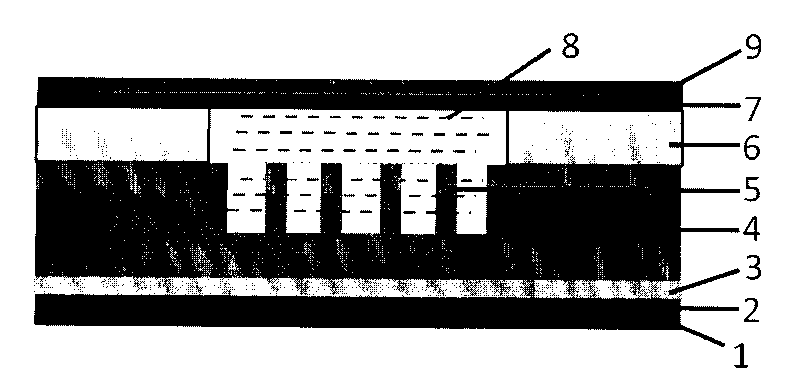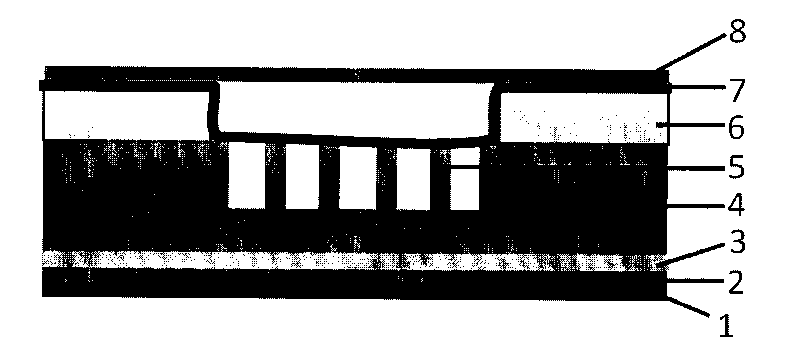Heterojunction and photoelectrochemistry mixed solar cell
A solar cell, photoelectrochemical technology, applied in photovoltaic power generation, circuits, electrical components, etc., can solve the problems of less than 0.1%, increased battery internal resistance, low junction area, etc.
- Summary
- Abstract
- Description
- Claims
- Application Information
AI Technical Summary
Problems solved by technology
Method used
Image
Examples
Embodiment 1
[0042] Use a single crystal n-type silicon wafer with a silicon nanowire array in the center of one side; cover the insulating sealing layer of the battery on the side with the silicon nanowire array, wherein the insulating sealing layer only covers the part of the edge of the silicon wafer that does not have the silicon nanowire array ; Deposit Ti, Pd, Ag metal layers successively on the side of the silicon chip without silicon nanowire array by thermal evaporation technology to form ohmic contact electrodes. A 50nm thick carbon nanotube film is spread on the silicon nanowire array, and its edges are laid on the insulating sealing layer. Where the carbon nanotube film and the silicon nanowire array are in contact, an electrolytic solution containing bromine (3%) and hydrogen bromide (40%) is added dropwise, and the electrolytic solution penetrates into the silicon nanowire array through the gaps of the carbon nanotube film In the gaps, the carbon nanotube film, the silicon na...
PUM
 Login to View More
Login to View More Abstract
Description
Claims
Application Information
 Login to View More
Login to View More - R&D
- Intellectual Property
- Life Sciences
- Materials
- Tech Scout
- Unparalleled Data Quality
- Higher Quality Content
- 60% Fewer Hallucinations
Browse by: Latest US Patents, China's latest patents, Technical Efficacy Thesaurus, Application Domain, Technology Topic, Popular Technical Reports.
© 2025 PatSnap. All rights reserved.Legal|Privacy policy|Modern Slavery Act Transparency Statement|Sitemap|About US| Contact US: help@patsnap.com



